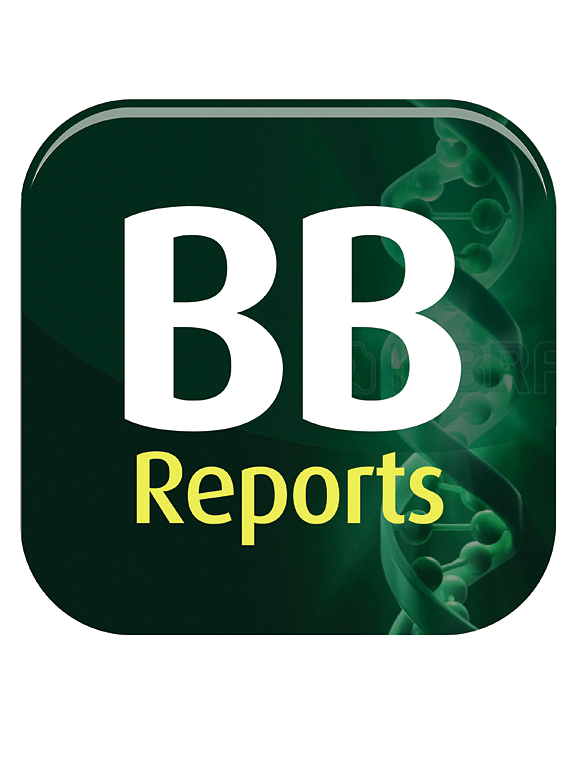一种基于纳米荧光素酶互补的检测多巴胺D3受体β-arrestin2募集的方法
IF 2.3
Q3 BIOCHEMISTRY & MOLECULAR BIOLOGY
引用次数: 0
摘要
荧光素酶互补试验已经出现作为一个简单的手段,监测受体-效应相互作用的活细胞在一个时间解决的方式。在这里,我们描述了一种纳米荧光素酶互补实验,能够报告β-arrestin2在完整HEK293T细胞中激活后向人多巴胺D3受体(D3R)募集。在时间分辨实验中,我们检测了内源性激动剂多巴胺和合成D3R激动剂水龙头-73在抑制反应终止率上的差异。我们还研究了外源GRK2对β-arrestin2向D3R募集的影响。我们发现,与D2R和D4R相比,多巴胺诱导D3R的捕集蛋白的效力不受GRK2过表达的显著影响。我们没有观察到多巴胺诱导GRK2向D3R募集,这进一步证实了GRK2对D3R信号的调控缺失,这再次与D2R和D4R相反。相反,多巴胺浓度依赖性降低GRK2和D3R之间的相互作用。此外,我们研究了人类D3R的Ser-9和Gly-9变体,根据一些早期的报道,它们在多巴胺亲和力和功能效力方面有所不同。然而,我们发现这两种变体之间的浓度-反应关系没有差异,无论是在研究逮捕蛋白募集还是GRK2相互作用时。总之,本报告证明了纳米荧光素酶互补在活细胞中研究D3R药理学的效用。本文章由计算机程序翻译,如有差异,请以英文原文为准。
A nanoluciferase complementation-based assay for monitoring β-arrestin2 recruitment to the dopamine D3 receptor
Luciferase complementation assays have emerged as a simple means of monitoring receptor-effector interactions in living cells in a time-resolved manner. Here, we describe a nanoluciferase complementation assay capable of reporting on β-arrestin2 recruitment to the human dopamine D3 receptor (D3R) upon its activation in intact HEK293T cells. Using this assay in time-resolved experiments, we detect differences in arrestin response termination rates between the endogenous agonist dopamine and the synthetic D3R agonist FAUC-73. We also investigate the influence of exogenous GRK2 on β-arrestin2 recruitment to the D3R. We find that, in contrast to the D2R and D4R, the potency of dopamine to induce arrestin recruitment to D3R is not significantly influenced by GRK2 overexpression. In further agreement with a lack of GRK2 regulation of D3R signalling and again contrary to the D2R and D4R, we do not observe dopamine-induced recruitment of GRK2 to D3R. Conversely, dopamine concentration-dependently decreases the interaction between GRK2 and D3R. Additionally, we examine both the Ser-9 and Gly-9 variants of the human D3R, which, according to some earlier reports, differ in terms of dopamine affinity and functional potency. However, we find no difference in the concentration-response relationships between these two variants, neither when arrestin recruitment nor GRK2 interactions are studied. In summary, the present report demonstrates the utility of nanoluciferase complementation for studying D3R pharmacology in living cells.
求助全文
通过发布文献求助,成功后即可免费获取论文全文。
去求助
来源期刊

Biochemistry and Biophysics Reports
Biochemistry, Genetics and Molecular Biology-Biophysics
CiteScore
4.60
自引率
0.00%
发文量
191
审稿时长
59 days
期刊介绍:
Open access, online only, peer-reviewed international journal in the Life Sciences, established in 2014 Biochemistry and Biophysics Reports (BB Reports) publishes original research in all aspects of Biochemistry, Biophysics and related areas like Molecular and Cell Biology. BB Reports welcomes solid though more preliminary, descriptive and small scale results if they have the potential to stimulate and/or contribute to future research, leading to new insights or hypothesis. Primary criteria for acceptance is that the work is original, scientifically and technically sound and provides valuable knowledge to life sciences research. We strongly believe all results deserve to be published and documented for the advancement of science. BB Reports specifically appreciates receiving reports on: Negative results, Replication studies, Reanalysis of previous datasets.
 求助内容:
求助内容: 应助结果提醒方式:
应助结果提醒方式:


